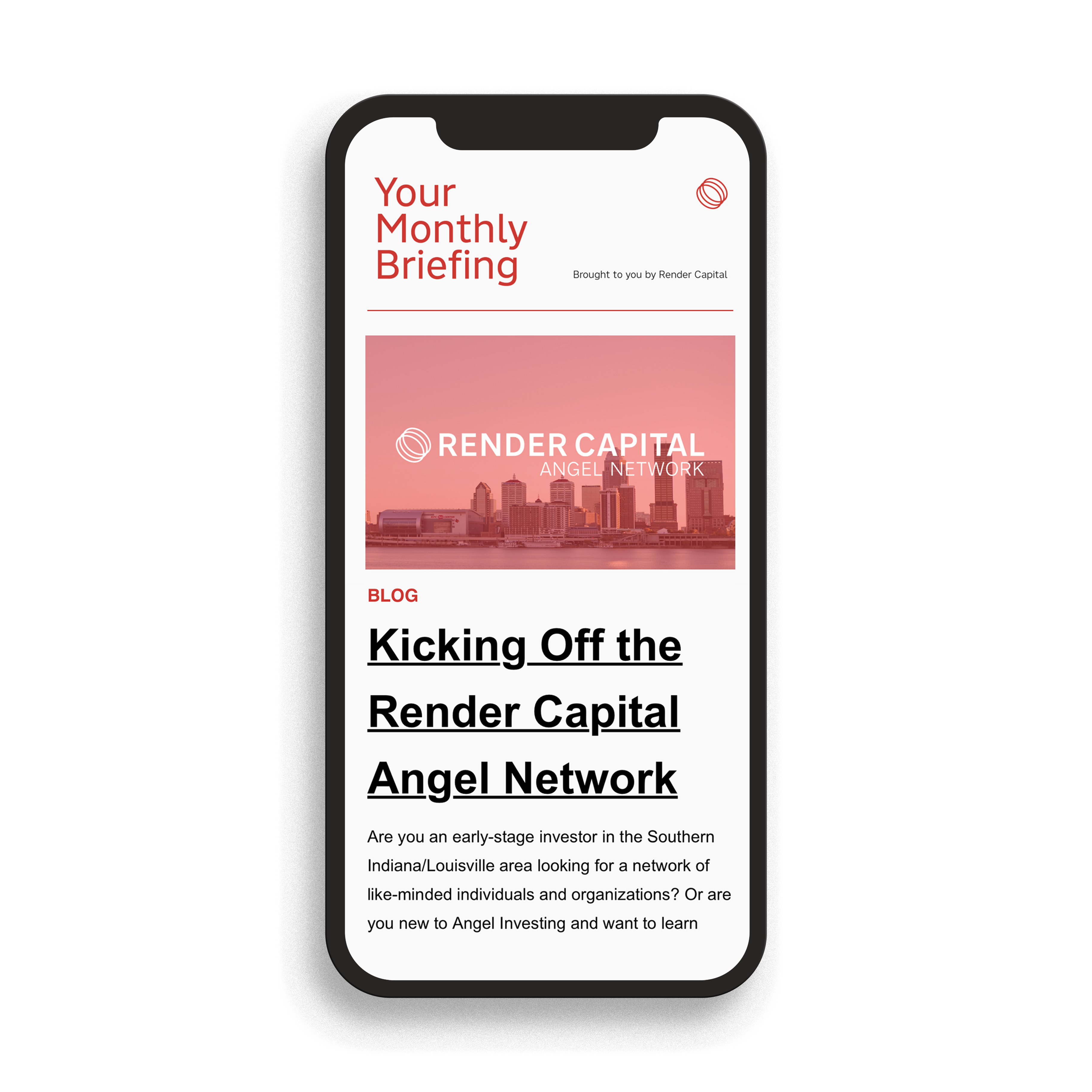Most of these blogs are geared toward investors, but this one is a bit different. Today, I want to talk to founders about ways they can be more effective when presenting to angel groups. Over the last year, my group, the Render Capital Angel Network, launched in January 2023, have heard pitches from 30 startups.
Throughout that time, I’ve noticed a few simple things startups can do to drastically increase their chances of getting funding. Here's a few:
Be concise in your presentation.
I understand that you want to take the opportunity to tell potential investors everything about your company. Seriously, I get it. It’s your baby. I have my own company and I feel the same way. That said, you have to be pragmatic. Investors are listening to your pitch through the lens of deciding if they have a reasonable chance of making a return on their investment if they invest in you.
How do you convince them of that? Personally, I start by looking for three things:
- Is there a problem and is that problem big enough to create a market?
- Do you have a solution that buyers will pay for?
- Are you the right person or team to implement that solution?
Every investor has different criteria, but these are what I use to initially vet companies. If you want to catch my attention, you need to answer each of these questions, preferably in your deck and in a way that I can understand without additional context.
Don’t be overly wordy.
This goes for both your pitch deck and your actual presentation. Y Combinator has a great pitch deck template and I can’t recommend it enough. There’s no reason to reinvent the wheel here. They recommend focusing on clarity and concision and I can’t agree more. You can find their deck here.
Use it and love it. The only thing I might change is to move the ask up to the front of the deck, so that investors can know immediately if you’re a fit for their portfolio based on round size, valuation, and minimum check size. Sometimes great companies aren’t a great fit for a specific investor solely because their round size or valuation doesn’t fit with the investor’s portfolio construction. It’s better to know this up front.
I’ve seen many decks that were beautifully designed and way, way too long. Even worse is the deck that doesn’t include any information on what the company actually wants to raise. When I can’t immediately reference round size, terms, and valuation, it’s easier to put the deck in the too hard pile, unless the pitch was incredibly compelling.
Respect the time you’re given and make the most of it.
Time for a quick story.
I’m a member of several angel groups. One group does a great job of establishing a schedule and sticking to it. Startups are given a certain amount of time to present, and they’re held to that. It’s twenty minutes, followed by a separate time for questions.
Not long ago, a startup pitched, and I don’t even remember anything about their business. What I do remember is that they spent nearly ten minutes of their presentation reviewing the backgrounds of every single person associated with the project. They spent 3-4 minutes on the background and experience of their social media manager, who had only graduated college a few months prior.
I mention this because that was not an effective use of their time. They didn’t make the most of it because honestly, I don’t care about the background of your social media manager. Unless you’re building a community and that’s directly influential on the outcome of your startup, it’s immaterial.
That time could have been better used to define the problem and how the startup would solve it. They could have talked about early traction or in lieu of traction, how their customer research and validation had pointed towards a specific need.
Going back to my earlier point, founders need to convince investors that a problem exists and that they have a solution to that problem, one that people will pay for. Beyond that, background is relevant to the extent that impacts your ability to implement your business model. If you’re building a solution for health insurance companies and your CSO is ex-Humana? Tell us that. Otherwise, I expect that you’ve hired solid employees. I don’t need to double check that.
Bringing it together
Shorter is better. If you can convince me of the three items I mentioned above, I’m going to dig more. That’s when you bring out more and more information.
Think of the pitch as speed dating. You’re not trying to get engaged from a 3-minute conversation. Your goal is create enough interest to justify a second date.
Interested in joining the Render Capital Angel Network?
.png?width=2708&height=560&name=2022%20Render%20Capital%20Red-04%20(4).png)





